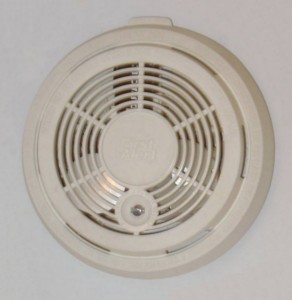- Homepage
- Departments
- Research Safety & Services
- Hazardous Waste Management
- Chemical Waste
- Universal Waste
Universal Waste
- Pest Management
- Fire Plan Review and Inspection
- Building Codes Enforcement
- ADA Assessment
- Applicable Building Codes
- Building Emergency Coordinators
- Certificate of Completion or Occupancy
- Chartfield Form Codes Permits
- Inspections
- Permit Application Process
- PERMIT APPLICATIONS AND FORMS
- Permit Fee Schedule
- Permit Instructions
- Plan Submittal Guidelines
- Temporary Structures on Campus – Including Tents
- Insurance and Risk Management
- Occupational Medicine
- Industrial Hygiene & Occupational Safety
- Ergonomics
- Camps
- Drones/UAS
- Building and Contents
- Boating & Dive Safety
- Automobile
- Report Lab Closeout
- Radiation Safety
- Hazardous Waste Management
- Chemical and Lab Safety
- Standard Operating Procedures
- Safety Surveys
- Peroxide Forming Compounds
- New Labs, Moving Labs & Closeouts
- Nanoparticles
- Minors and Visitors in the Lab
- Lessons Learned
- Lab Ventilation
- Lab Signage
- Lab Safety Manual
- Hydrofluoric Acid
- Greenhouse Safety
- First Aid Kit Info
- Equipment Purchase Approval
- Equipment Decontamination
- DEA – Controlled Substances
- DBPR – Pharmaceutical Products
- Cryogens
- Compressed Gas
- Chemical Storage and Management
- Chemical Spills
- Chemical Safety Information
- Chemical Inventory
- Chemical Hygiene Plan
- Chemical Exposures
- Acids That Deserve Special Attention
- Biological Safety
- Vaccination Policy for Research Personnel
- Shipping and Transport of Biological Materials
- Select Agents
- Research Involving Flying Insects
- Recombinant & Synthetic Nucleic Acids
- Plant Research
- NIH Guidelines Flowchart
- BloodBorne Pathogen Program
- Biohazardous Waste Disposal
- Biohazard Project Registration
- Autoclaves
- Acute Biological Toxins
- Lab Safety & Research Services
- Clinic Safety
- Chemical Safety
- Animal Research Safety
Universal Wastes are a special family of wastes which are regulated differently from the rules governing hazardous waste. There are three types of Universal Waste which are commonly generated in University of Florida workplaces:
Rechargeable Batteries
- Includes all types of rechargeable batteries (of any size), car batteries, batteries removed from Uninterrupted Power Supplies (“UPSs”), batteries containing toxic heavy metals such as lead or cadmium, Nickel Metal Hydride batteries, and Lithium Ion batteries
- Does not include alkaline batteries, which may be disposed of as normal trash
- Place batteries in a rigid outer container such as a box or bucket
- Label as “Universal Waste-Batteries”
- Write accumulation start date on label; recycle through EH&S within one year

Mercury-Containing Lamps
- Includes all types of fluorescent bulbs (including compacts), high-intensity bulbs (“HIDs”), Mercury lamps, UV bulbs, projector bulbs, and U-tube or circular bulbs
- Does not include incandescent bulbs, which may be disposed of as normal trash
- Place bulbs/lamps in a rigid outer container such as a box or bucket
- Label as “Universal Waste-Mercury Containing Lamps”
- Write accumulation start date on label; recycle through EH&S within one year

Mercury-Containing Devices
- Includes mercury-containing thermometers, thermostats, manometers, sphygmomanometers, mercury switches, and mercury tube control devices
- Place device in a rigid outer container such as a box or bucket
- Contain broken devices in a sealable plastic bag within the rigid outer container to prevent Mercury spillage
- Label as “Universal Waste- Mercury Containing Devices”
- Place device in a rigid outer container such as a box or bucket
- Write accumulation start date on label; recycle through EH&S within one year

Smoke Detectors
 Many smoke detectors contain radioactive materials. A label on the back or side of the detector will alert you to the presence of a radiation source. It is necessary to dispose of radioactive detectors through EH&S’s Chemical and Radioactive Waste Disposal group. The detectors must be intact for disposal.
Many smoke detectors contain radioactive materials. A label on the back or side of the detector will alert you to the presence of a radiation source. It is necessary to dispose of radioactive detectors through EH&S’s Chemical and Radioactive Waste Disposal group. The detectors must be intact for disposal.
Some smoke detectors may be exempt from these disposal requirements; contact EH&S at (352) 392-8400 to determine if your smoke detectors are exempted or regulated prior to disposal.
Whenever possible, maintenance activities are encouraged to install smoke detectors which do not contain radioactive sources. The disposal costs associated with radioactive sources will often outweigh a less-expensive initial cost.
Smoke detectors should be delivered to Building 831 in the Surge Area on Monday, Wednesday, or Friday from 8-9am. Shops are required to provide a written inventory to EH&S which details the number, make, model, and activity of each type of detector being disposed of.


